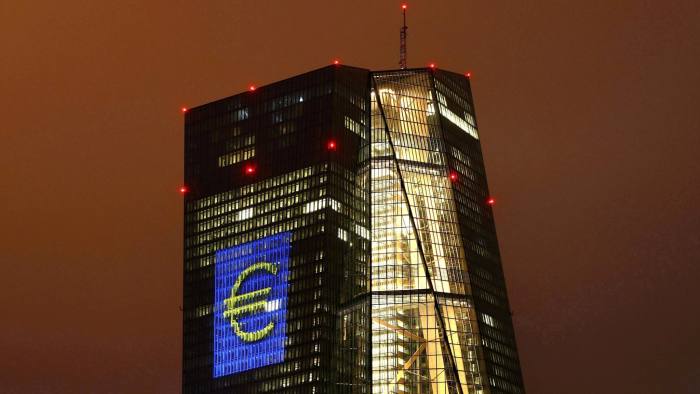Bond markets need to wake up to global upswing
Investors are mistaken if they think yields will be able to stay low for much longer
by Michael Heise

Markets predict no interest rate rises in the foreseeable future from the ECB © Reuters
Since the financial crisis in 2008, the global economy has been characterised by slow growth, low inflation and extremely expansionary monetary policies. Markets seem to expect a continuation of this so-called “new normal”. They predict no interest rate rises in the foreseeable future from either the ECB or the Bank of Japan, and they expect the Fed funds rate to stay lower than indicated by the Fed`s governors.
After years of sluggish growth, many people seem to be stuck in a “great recession” or secular stagnation mindset. There are, however, clear signs of a cyclical recovery and it is accelerating.
First, global trade is staging a comeback — notwithstanding the protectionist rhetoric of some political leaders. After two dismal years in 2015 and 2016, the trade recovery is fuelled by a recovery in the Chinese economy and the turn of commodity markets. The interlinkages of trade are reinforcing global growth.
Second, globally, a new expansionary credit cycle is supporting growth. In emerging Asia, credit growth remains strong, despite policy efforts to limit financial stability risk, especially in China. In the US, the credit cycle turned about three years ago, with first the corporate sector and then households assuming more debt. The debt-to-GDP ratio in the private non-financial sector, which had declined massively in the years following the financial crisis, has been rising again since 2014. In the eurozone, the new credit cycle is in its infancy, but here, too, loans to the private sector are rising again. The time of deleveraging and consolidation of private debt is over.
Finally, capacity utilisation in most developed markets is back to normal or even above normal.
Current estimates of output gaps indicate there is hardly any slack in the world`s big economies. That is true even in the eurozone, where capacity utilisation in manufacturing is reported to be above average. While it is true that prices and wages and prices in today’s globalised and digitised economy don’t react to capacity utilisation as strongly as they used to in former decades, it seems unrealistic to expect no reaction at all. Improving business confidence, little idle capacity and tightening labour markets will at least gradually increase wage demands and output prices.
What does the economic upswing imply for bond yields and stock markets? Usually, we would expect bond yields to be roughly in line with nominal GDP, both on the basis of economic logic and historical experience. But while nominal GDP growth has averaged 2.7 per cent in the eurozone and 3.5 per cent in Germany in the last three years, bond yields have remained much lower, in many countries close to zero.
One reason for this discrepancy is, of course, monetary policy. Our own estimates, as well as statements by ECB officials, suggest that the central bank’s asset purchase programme has pushed down the German 10-year Bund yield by about 0.8 percentage points. A normalisation of monetary policies, notably an end to QE, would drive up bond yields. By how much is an open question, as the phasing out of QE will to some extent have been priced into yields already. An exit, if done carefully and gradually, should therefore not unsettle markets. It would leave eurozone bond yields much below nominal growth rates.
Bond yields could react more forcefully, if and when market participants upgrade their expectations concerning future growth and inflation. Once investors wake up to the return of the economic cycle, their expectations about interest rates and the course of monetary policy will also change. The ECB is cautioning against overly optimistic expectations and remains expansionary in its forward guidance. But as the cyclical expansion gains force, central banks might have to take tougher action to correct an excessively expansionary path. Further delaying the exit from QE therefore harbours risks.
Rising bond yields in an economic expansion are nothing unusual and should not cause a fundamental repricing of stocks. After all, even bond yields of 2 or 3 per cent imply price earnings ratios for bonds that are way above stock market valuations. The transition from a “new normal” with a rather bleak outlook to a more cyclically driven expansion will inevitably generate volatility. Keeping it low as low as possible is a challenge for the ECB. A timely, but gradual correction of monetary policy is the best option.
Michael Heise is chief economist at Allianz
0 comments:
Publicar un comentario